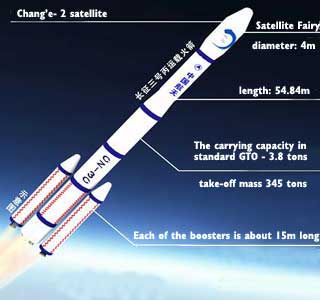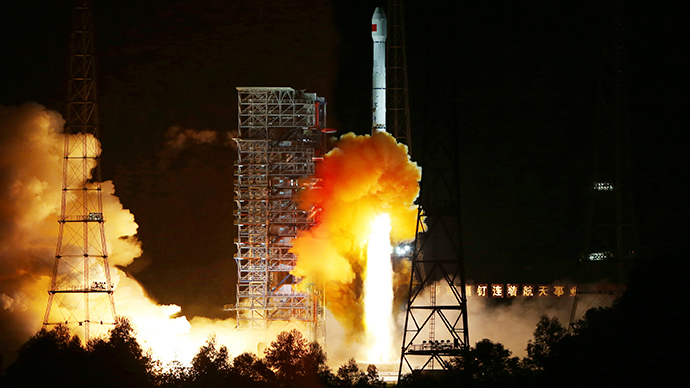China launched an experimental unmanned spacecraft Friday–the country’s first return moon mission. The craft, which had a successful launch atop an advanced Long March-3C rocket and is currently travelling along its planned trajectory, will spend eight days in space before returning to Earth.
 The craft successfully entered its expected orbit shortly after launch, according to the State Administration of Science, Technology and Industry for National Defense, the developers of the craft.
The craft successfully entered its expected orbit shortly after launch, according to the State Administration of Science, Technology and Industry for National Defense, the developers of the craft.
The lunar orbiter was launched from the Xichang Satellite Center in the southwestern Chinese province of Sichuan, atop a Long March-3C rocket, according to Xinhua news.
The flight is expected to take eight days, during which time it will half orbit the moon before returning to Earth and landing in Inner Mongolia.
The purpose of the mission is to test technologies that will be used on a future space vessel, Chang’e-5, which will be sent to collect samples on the moon in 2017. Chang’e-5 will be the final of three phases in China’s moon probe project. Chang’e-1 and Chang’e-2 were completed in 2007 and 2010. Chang’e-3–China’s first moon rover, called Yutu–completed a soft landing on the moon in December 2013. Chang’e-4 is a backup probe for Chang’e-3.
The experimental craft launched Friday will gather data and validate re-entry technologies such as guidance, navigation and control, heat shield and trajectory design.
[su_youtube url=”https://www.youtube.com/watch?v=9ZEgftXqQbI&feature=youtu.be”][su_youtube url=”https://www.youtube.com/watch?feature=player_embedded&v=ctbc9kw1oHA”][/su_youtube]
By Daniel Jackson
